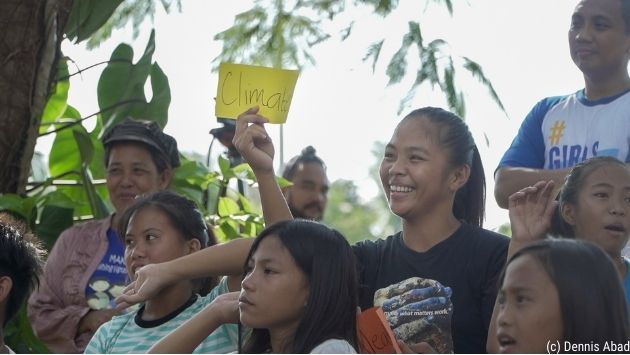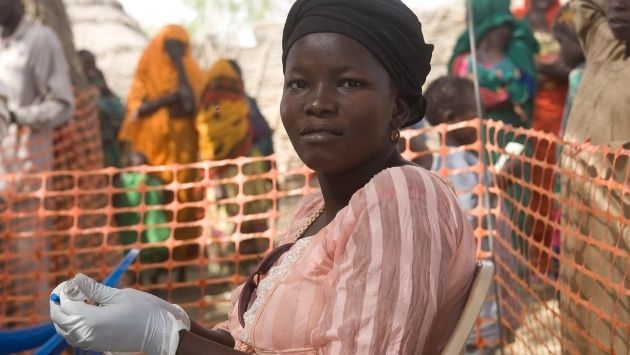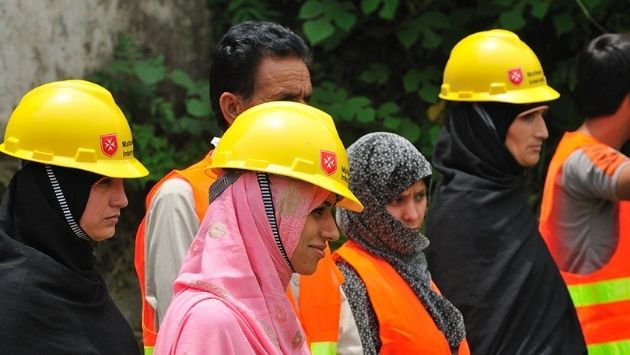Priorities are shifting. Power dynamics are being rebalanced. Organisations around the world are looking for ways to adapt to the crises of today, and prepare for the problems of tomorrow.
Here are three trends that will help shape the humanitarian sector in the years to come.
Climate Change

Climate change is one of the most pressing humanitarian crises of the century. Rising sea levels threaten to submerge the densely populated coastal regions of Bangladesh, while across the Pacific, increasingly frequent floods, typhoons, and mudslides could lead to the exponential loss of life and livelihoods.
In the last decade, 83% of disasters around the world were climate related. Asia and the Pacific remain the hardest hit, with 75% of all people affected by disasters living in this region.
The international aid community has long foreseen the consequences of climate change, but still not enough is being done about it. Over the last 2 years, RedR UK has conducted training on climate change adaptation and disaster risk reduction in both the Philippines and Bangladesh, helping to build the capacity and resilience of vulnerable communities. Instead of responding to disasters after the fact, resources must be allocated to developing long term solutions at the local level, that in turn must direct the global response to climate change.
This year’s Climate Summit (COP26) will be hosted in the UK and will be a momentous opportunity for participating nations to coordinate their efforts. How governments and NGOs choose to respond to the climate crisis will have a direct impact on the future of people affected by disasters across the globe.
Localisation to Meet Humanitarian Needs

COVID-19 has proved beyond any doubt that local actors are critical to humanitarian responses. As a means of long-term capacity building, and as a method for addressing the power imbalance between international NGOs and the communities they serve, localisation is integral to the success of humanitarian efforts.
Local and national actors have the benefits of legitimacy, better access, and better understanding of cultural realities in their communities . By empowering these actors to respond directly to crises, aid can be delivered more effectively to those who need it most.
Although the humanitarian sector remains under the hegemony of the largest aid agencies, the UN’s 2030 Agenda for Sustainable Development makes clear that collaboration, not competition, must define relationships between local and international actors.
By offering accessible training courses to local and national humanitarian staff, RedR UK will continue to support those best placed to respond to crises in their own communities.
In the coming years, localisation will shape how many humanitarian organisations operate, as more power is shifted to locally led responses.
Diversity, Equity, and Inclusion

In 2020, Black Lives Matter underscored the urgent need to act on institutional racism. Only a year prior, #CharitySoWhite prompted a similar conversation on the sector’s failings.
Humanitarians across the globe spoke out about their own experiences, and in doing so threw the spotlight on racism in international aid.
Self-reflection is a valuable tool for NGOs to examine their own shortcomings when it comes to diversity, equity, and inclusion. For a sector whose goal is to serve vulnerable groups, the humanitarian community must acknowledge that racism can be both internal and external; it can affect staff and aid recipients alike.
Deconstructing institutional racism and creating equitable and inclusive practices will take time. However, there are signs of hope. The Inter-Agency Standing Committee (IASC) released a promising statement in September, pledging to act on racial discrimination. With signatories from multiple UN agencies and major NGOs, this is a step in the right direction.
Other organisations have begun offering diversity and inclusion training, hoping to inspire change in the humanitarian sector, and challenge longstanding barriers to diversity.
Inclusion is an integral aspect of RedR UK’s work, and as an organisation we always strive to do better. The diversity of RedR trainers and course participants is one of our greatest strengths, and allows us to help build capacities among local staff and communities. Effective humanitarian action must be inclusive of all members of society, without discrimination of any kind.